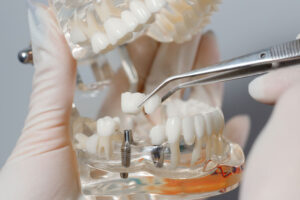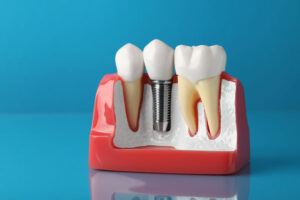Invisalign for Bite Issues
Originally, Invisalign® was only designed to address crookedness, crowding or spacing issues in the teeth. However, over the years, the technology has greatly improved, allowing for advancements when it comes to what issues it can tackle. A common question is whether or not bite issues can be addressed with Invisalign® clear aligners. Each patient is different, which means Invisalign® may work for some, but not others. However, there are a few general guidelines that patients can abide by when considering the treatment. Continue reading to find out!
A guide to Invisalign® for uneven bites
Below is a quick overview on Invisalign® when used for bite problems. This information may be useful to individuals who have an under, over or crossbite.
Mild to moderate bite issues
There are a number of bite issues that people experience; however, the most common are cross, under and overbites, all of which can cause an array of oral health problems. Thankfully, most mild to moderate bite issues can be addressed with Invisalign® treatment. In some cases, elastics or attachments are needed to apply additional pressure.
Moderate to severe bite issues
Bite issues that are considered to be moderate to severe may be treatable with Invisalign®; however, other resources will likely be required. Elastics or attachments may be added to the Invisalign® aligners in order to apply extra force. The extra force helps push the upper or lower arch into proper alignment, thus addressing the bite issue at hand.
It is good to know that in some cases, other orthodontic treatment may be required. Because Invisalign® is geared more towards correcting the positioning of the teeth, there are severe cases that may require braces and headgear. In the event that other orthodontic measures do not address the bite issue, jaw surgery may be required.
How it works
Under, over and crossbites can be addressed with Invisalign®. The process works the same as if the teeth were needing to be straightened or repositioned. As the aligners are worn every day, the teeth will begin to shift either forward or back, which stimulates the jaw to match the movement. As the jaw moves, the bite problem will begin to correct itself.
Patients will visit the dentist every six to eight weeks in order for a check-up to be had. The dentist will monitor progress and make any adjustments to the treatment plan. Unlike braces, Invisalign® does not require patients to visit the dentist for the actual adjustments. Patients are provided the entire series of aligners at the start of treatment, which allows them to change out sets every couple of weeks based on the timeline provided.
Get started with Invisalign®
Want to find out more about Invisalign®? Talking with a dentist is the best place to start. Any questions or concerns about the treatment can be addressed, and a quick evaluation can be done in order to determine the most appropriate plan of action. Reach out today to get scheduled for a consultation appointment or to learn more.
Request an appointment here: https://www.preferreddentalcenter.com or call Preferred Dental Center at (210) 822-8500 for an appointment in our San Antonio office.
Check out what others are saying about our dental services on Yelp: Invisalign in San Antonio, TX.




